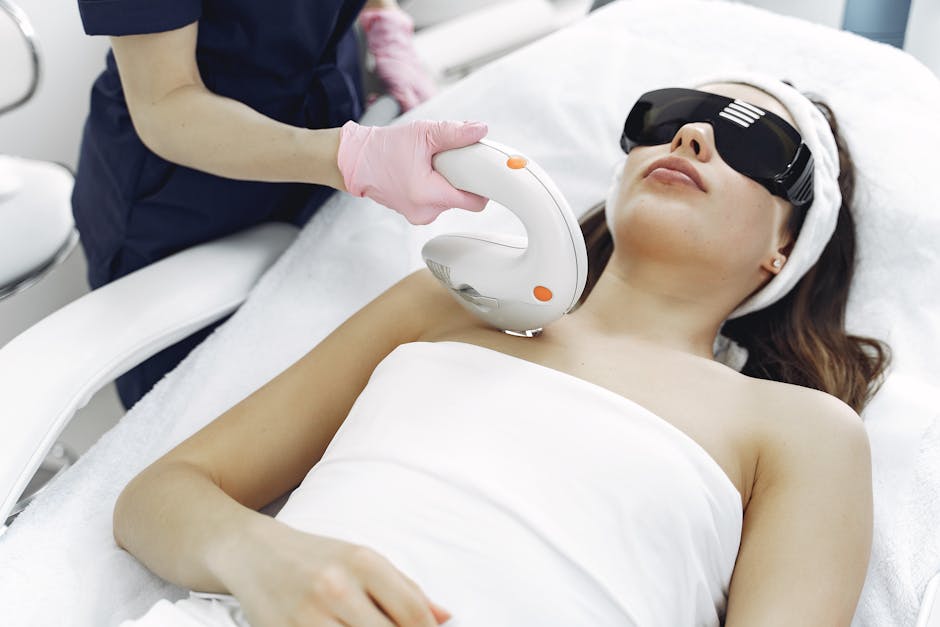The Role of Medical Laser Therapy in Modern Physiotherapy Practices
In the intricate world of modern physiotherapy, the evolution of medical laser therapy stands out as a game-changer. With beams of light paving the path to enhanced healing and pain relief, let’s delve into the radiant realm of laser therapy and its profound benefits.
Understanding the Evolution of Medical Laser Therapy
Medical laser therapy, once a novel concept, has now firmly established its place in the arena of physiotherapy. The journey of laser therapy traces back to its inception, where it was primarily utilized for its anti-inflammatory properties and pain management abilities. Over time, advancements in technology have refined laser devices, making them more precise and effective in targeting specific areas of the body.
The evolution of medical laser therapy has also seen an expansion in its applications, ranging from sports medicine to rehabilitation settings. Clinicians now harness the power of laser beams to stimulate tissue repair, reduce swelling, and alleviate pain associated with various musculoskeletal conditions. As research continues to unveil the full potential of laser therapy, its role in physiotherapy keeps evolving, offering new dimensions of treatment options.
Moreover, the development of laser therapy devices has led to the emergence of different wavelengths and modes of delivery. This diversity allows physiotherapists to customize treatment plans according to the unique needs of each patient. Whether it’s low-level laser therapy for superficial tissue healing or high-power laser therapy for deep-seated ailments, the versatility of medical lasers continues to reshape modern physiotherapy practices.
Benefits of Integrating Laser Therapy in Physiotherapy
The integration of laser therapy in physiotherapy heralds a multitude of benefits for both practitioners and patients alike. One of the primary advantages lies in the non-invasive nature of laser treatments, offering a gentler alternative to traditional therapies. This aspect makes it particularly attractive for individuals seeking pain relief without the risks associated with surgery or pharmaceutical interventions.
Additionally, medical laser therapy promotes accelerated healing processes, which can expedite recovery and reduce downtime for individuals undergoing physiotherapeutic interventions. By enhancing cellular metabolism and stimulating the production of collagen, laser therapy plays a pivotal role in tissue repair and regeneration. The precise targeting of affected areas further enhances the efficacy of treatment, ensuring optimal outcomes for patients.
Beyond its healing properties, medical laser therapy also exhibits analgesic effects, providing pain modulation that can significantly improve quality of life for individuals grappling with chronic pain conditions. This dual-action approach of relieving pain while promoting recovery positions laser therapy as a versatile and comprehensive modality within the realm of physiotherapy.
Future Prospects and Innovations in Laser Therapies
Looking ahead, the future of medical laser therapies in physiotherapy appears bright with a landscape of potential innovations on the horizon. As researchers delve deeper into photochemical and biological effects of laser treatments, new protocols and technologies are likely to emerge, further enhancing the efficacy and applicability of laser therapy.
The integration of laser therapy with other modalities such as manual therapy and exercise regimens holds the promise of comprehensive treatment approaches that address musculoskeletal disorders from multiple angles. This holistic paradigm shift in physiotherapeutic care underscores the potential of medical lasers not only in rehabilitation but also in performance enhancement and injury prevention strategies.
Moreover, advancements in laser technology, including portable devices and wearable applications, are likely to democratize laser therapies, making them more accessible to a broader spectrum of patients. The future holds promise for personalized treatment regimens that leverage the full spectrum of laser wavelengths, tailored to meet the unique needs and goals of individuals undergoing physiotherapy interventions.
Embracing medical laser therapy in modern physiotherapy practices illuminates a promising horizon. As technology advances and treatments become more advanced, laser therapy promises to continue shining brightly in the realm of healing.




